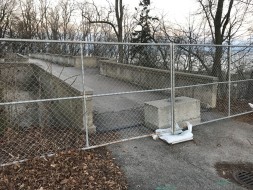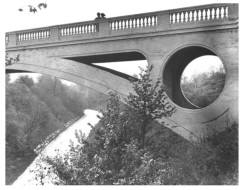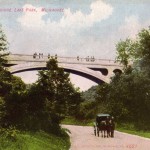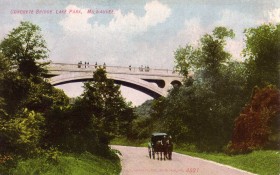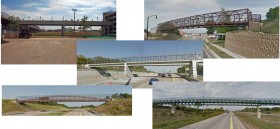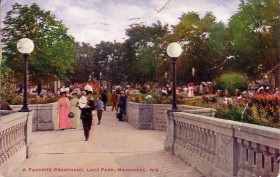A concerned East Side resident recently developed and launched a beautiful new website dedicated to the iconic but threatened 1905-1906 pedestrian bridge than spans Lake Park‘s Ravine Road.
 The website contains many resources, including information on the bridge’s condition and history, and why it faces potential demolition. The site also includes numerous images, including historic postcards and recent photos.
The website contains many resources, including information on the bridge’s condition and history, and why it faces potential demolition. The site also includes numerous images, including historic postcards and recent photos.
Although a study last year deemed the bridge safe for pedestrian use, county officials recently closed the bridge, citing a different interpretation of that study.
The county has budgeted only $500,000 for what it estimates as a $2.5 million project. It has said area residents should raise the additional $2 million. Neighborhood groups have said they would not be able to raise the funds.
In a recent article in OnMilwaukee.com, the website’s creator, graphic designer Rebecca Silber (who lives in the HWTN neighborhood), said:
“My only connections are personal – as a neighbor, and as an artist who appreciates historic buildings and structures. This website is completely neutral, and meant to be used as a resource – that was my true intention in creating it. I wanted to get information out there, to those who may not have information about the Ravine Road Bridge.”
“When the bridge was abruptly closed last month, I had questions,” she says. “As I went around seeking answers, I was getting answers, but I still felt helpless. I asked what I could do to help spread the word about the bridge and was told that I could use my talents to design a website about the bridge.”
“My personal hopes are that the current bridge can be preserved. I would be extremely sad if the bridge was destroyed,” she says. “Its design and engineering is historically significant and it’s believed to be one of the only bridges on which the renowned Milwaukee architects collaborated.
WISN-TV (Channel 12) also broadcast a story about the website and interviewed Rebecca.
HWTN’s website also includes a number of articles and resources on the bridge issue. They can be found via our search engine, using the word “bridge.”

